

Líneas pedagógicas.
TIC EN EDUCACION. Modalidad presencial Rúbrica Actividad. Mirando a SAMR través de la ventana de Blended Learning. The SAMR Model, designed by Dr.
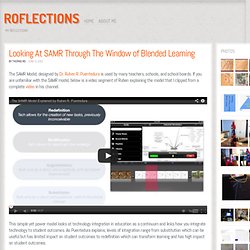
Ruben R. Puentedura is used by many teachers, schools, and school boards. If you are unfamiliar with the SAMR model, below is a video segment of Ruben explaining the model that I clipped from a complete video in his channel. This simple yet power model looks at technology integration in education as a continuum and links how you integrate technology to student outcomes. As Puentedura explains, levels of integration range from substitution which can be useful but has limited impact on student outcomes to redefinition which can transform learning and has high impact on student outcomes. If you were to do a search for ‘SAMR model’ your results would show many different applications and images of the SAMR model.
Technology is only as effective as how it is used and the tasks that our students are engaging in. What would you put in the four quadrants? Second Update: Based a comment from Aaron Puley, I’ve added some variations of the Window. Like this:
ISEI-IVEI. Concepciones eñza. Inicio - Google en la Educación. El curriculum escolar y la nueva ecologia del aprendizaje. GIGANTES DE LA EDUCACIÓN. Gigantes de la educación Lo que no dicen los rankings… Archive | EUROPA RSS feed for this section AMÉRICA, EUROPA - 19/01/2014 - 0 Comments En 2014, en educación se hablará sobre… EUROPA - 16/05/2013 - 0 Comments La UE destinará al menos 2.500 millones de euros para educación hasta 2020 EDUCACIÓN EN EL S.XXI, EQUIDAD, EUROPA, LOS RANKINGS DICEN... - 18/04/2013 - 0 Comments.
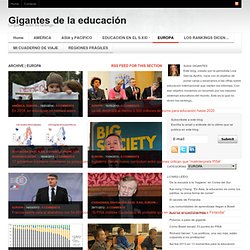
Docentes. La Realidad de las TIC en Educación. Enfriar Estudiantes Toolsfor Siglo 21 - Preguntas Esenciales. NETS S - National Educational Technology Standards for Students.www.iste.org An essential question is the starting point, the point of inquiry in which students are engaged in real world explorations that are meaningful and have purpose.Responses to Essential Questions cannot be found, they must be developed from research, experimentation, investigation, and practical experience.
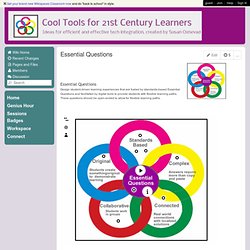
Answers to these types of questions require students to construct knowledge and sufficient time must be devoted to providing students with opportunities to develop those answers.daretodifferentiate.wikispaces.com Essential questions require students to connect the learning to the world they live in today. They require students to make an assessment of current information, through research and experimentation and combine it experiences to form an argument or solution.blog.iseesystems.com Additional information can be found in the NETS S Standards for Creativity and Innovation:
Profes.net.
BYOD. Peneira (content curator) Infoescuela. "Hay que cambiar la forma de enseñar con el fin de integrar los REA" How has been your experience with OER at your university?
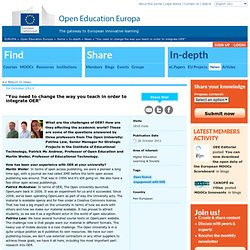
Martin Weller: In terms of open access publishing, we were a pioneer a long time ago, with a journal we had called JIME before the term open access publishing was around. That was in 1996 and it’s still going on. We also have a few other open access publishings. Patrick McAndrew: In terms of OER, The Open University launched OpenLearn back in 2006. It was an experiment for us and it succeeded. Patrina Law: We have several hundred course texts on OpenLearn website. Why is the release of open content that essential for the academic world?
Martin Weller: Open Access has changed since the university was founded in 1969. Patrick McAndrew: There’s so much available as free access on the internet. Patrina Law: There are over 600 courses available as OER from The Open University. How important will be the OER in the future of education? How will MOOCs force teachers to rethink their way of teaching? Instituto Nacional de Tecnologías Educativas y de Formación del Profesorado. RubiStar Home. Matriz de Valoración (Rúbricas - Rubrics en inglés) ¿QUÉ SON LAS RÚBRICAS?
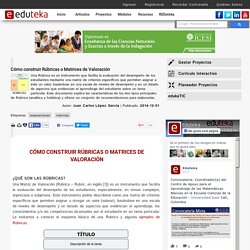
Una Matriz de Valoración (Rúbrica – Rubric, en inglés [1]) es un instrumento que facilita la evaluación del desempeño de los estudiantes, especialmente, en temas complejos, imprecisos o subjetivos. Este instrumento podría describirse como una matriz de criterios específicos que permiten asignar u otorgar un valor (valorar), basándose en una escala de niveles de desempeño y un listado de aspectos que evidencian el aprendizaje, los conocimientos y/o las competencias alcanzadas por el estudiante en un tema particular. Le invitamos a conocer el esquema básico de una Rubrica y algunos ejemplos de Rúbricas. Esquema de una Rúbrica De acuerdo con la definición antes expuesta, una Matriz de Valoración o Rúbrica sirve para establecer o consultar cómo va el proceso de aprendizaje del estudiante. Promueve expectativas sanas, pues clarifica cuáles son los desempeños que los estudiantes deben alcanzar.